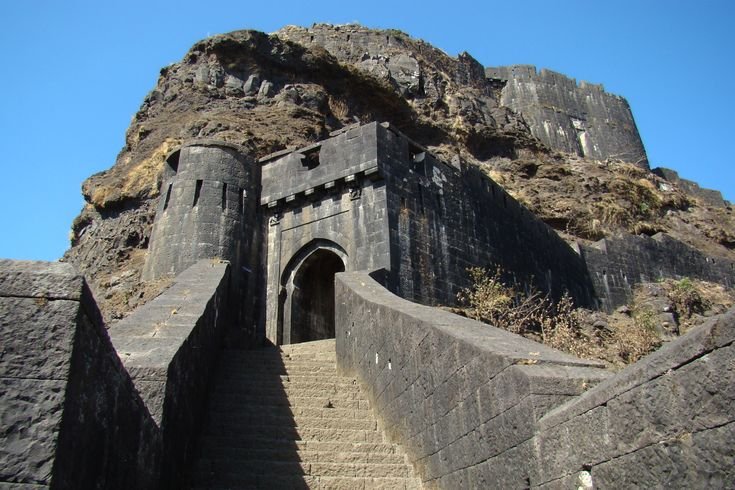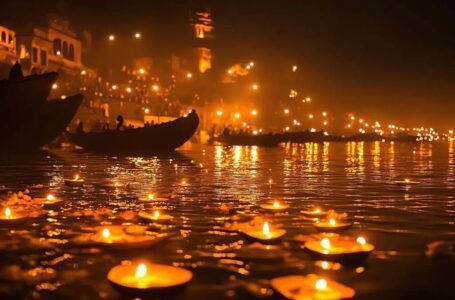Echoes of Forgotten Forts: Hidden Stories from India’s Overlooked Strongholds

-Mili Joshi
When we think of India’s forts, names like Mehrangarh, Red Fort, or Chittorgarh often come to mind — mighty walls that have graced a thousand postcards. But far away from guided tours and polished plaques lie other forts, tucked in the folds of hills, hidden among forests, or perched quietly on rocky outcrops. These forgotten forts, scattered across regions like Chhattisgarh and Bundelkhand, stand as silent witnesses to battles fought, dynasties lost, and communities that continue to guard their memories.
For the curious traveller, they offer something special — the chance to wander without crowds, to touch stones unpolished by constant footsteps, and to listen to stories that haven’t yet been packaged neatly for brochures. They remind us that history isn’t always in the spotlight — sometimes, it sits in the shadows, waiting for someone to care enough to ask.
Madan Mahal Fort: The Lone Guardian of Jabalpur
Let’s begin in the forests of Madhya Pradesh, near Jabalpur, where the Madan Mahal Fort rests on a solitary hill. Built by Raja Madan Singh, this 11th-century fort is small compared to the grand palaces of Rajasthan, but its simplicity holds an unmatched charm.
Climbing the stone steps, you’ll pass by enormous balancing boulders that locals say have stood unmoved for centuries — a geological marvel and a natural sentinel rolled into one. The fort itself is more of a watchtower than a palace, with secret rooms, underground passages, and tiny windows that once kept a lookout for enemies advancing through the dense forests below.
Locals often point out how the fort once connected trade routes and protected the Gond kings’ territories. Today, children run up its slopes after school, shepherds rest in its shade, and from its ramparts, you can catch your breath and watch Jabalpur city spread quietly in the distance.
Garh Kundar: Bundelkhand’s Hidden Stone Fortress
Travel further north to Bundelkhand, where rocky hills hide another forgotten gem: Garh Kundar Fort. Unlike the bustling forts of Orchha or Jhansi, Garh Kundar sits peacefully atop a hill near Tikamgarh district, its bastions weathered but dignified.
Built in the 12th century by the Chandela kings, Garh Kundar was once a vital defensive outpost, overseeing the surrounding plains and trade paths. It has changed hands between Rajput clans and Bundela rulers, each leaving behind traces of their time — be it a stone carving here, or a faded mural there.
Unlike polished tourist spots, here you might find no guide waiting at the entrance. Instead, village elders will often double up as storytellers, happy to walk you through narrow gateways and hidden staircases, sharing how the fort’s strategic design once made it nearly impossible to conquer.
Even today, locals gather at its gates for festivals, processions, or just an evening stroll — proof that Garh Kundar, though forgotten by maps, remains alive in the heart of its people.
Ratanpur Fort: A Forgotten Capital in Chhattisgarh
Tucked away in Bilaspur district, Ratanpur was once the capital of the Kalachuri kings — a name that rarely makes it into school textbooks but once held sway over large swathes of central India. At the centre of this sleepy town stands the Ratanpur Fort, partially reclaimed by the forest but still echoing with tales of its regal past.
Walk through its mossy gates and you’ll see ancient temples with intricately carved doorways, stone elephants half-hidden in overgrown courtyards, and crumbling walls that once shielded royal families from invaders.
What’s unique about Ratanpur is how seamlessly the old blends with the everyday. Local women come here to pray, young boys play cricket in the dusty courtyards, and during festivals, the entire fort complex lights up with oil lamps, echoing traditions that have survived centuries of change.
Why Do These Forts Matter?
In an age of hashtags and curated travel lists, these forts remind us that history isn’t just about the famous and the grand. It’s about smaller stories too — of kingdoms that rose and fell quietly, of stones that watched trade caravans pass, of families who still preserve these sites out of sheer love and pride.
When you visit a forgotten fort, you don’t just tick off a monument — you become part of its living story. You might meet a village priest who knows every inch of the fort’s hidden passages, or a local farmer who’ll show you a centuries-old inscription that hasn’t made it to any guidebook.
These places teach us that real heritage is fragile. They need us — the respectful traveller, the curious wanderer — to care enough to remember, to share, and maybe even help protect what remains.
How to Experience Them
If you’re tempted to trade crowded palaces for forgotten forts, here are a few gentle tips:
1. Travel Lightly: These sites often lack signboards and facilities. Hire a local guide or talk to villagers — they are the best storytellers and caretakers.
2. Respect the Space: Many of these forts house active temples or shrines. Dress modestly, don’t carve names into walls, and leave things as you found them.
3. Carry Stories Back: Share what you see. Write about it, tell your friends, or just remember. Small attention keeps these places alive.
4. Support Local Communities: Buy tea from the small stall at the base, hire local transport, or donate to village trusts working to preserve these sites.
An Invitation to Wander
India’s forgotten forts are more than crumbling walls — they’re bridges to times when kingdoms rose overnight, rulers defended their people with courage, and stories travelled farther than armies. They stand quietly, weathered by sun and rain, waiting for a curious traveller to pause and listen.
So next time you find yourself craving an adventure off the beaten path, skip the guidebook’s top ten. Pick a place like Madan Mahal, Garh Kundar, or Ratanpur. Take the long road, climb the broken steps, touch the ancient stone, and stand still for a moment. Listen to the silence — it might just speak back.
Because sometimes, the walls that time forgot are the ones that remember us best.
Ready to wander? Pack your curiosity, a bottle of water, and an open heart — India’s forgotten forts are waiting.


